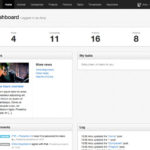Expect A Mail Renaissance: Here’s The Role The Digital Mailroom Will Play
Mail is still a useful resource for marketing and outreach. In fact, it might be about to hit a new renaissance precisely because there is so much competition for it now. With every brand on social media and email boxes being flooded with ever-greater quantities of spam and junk mail, there’s something about mail that’s proving to be a lure for, ironically given how old mail is as a concept, the more innovative brands.

Image Credit: Unsplash
The appeal of mail is quite simple; it’s tangible. Social media and other online interactions are blink-and-you’ll-miss-it affairs. Email gets relegated off to folders and then forgotten. A piece of mail, however, has weight (literally), and occupies a person’s vision; it’s there in front of them or on their desks and can be picked up and looked at. That, in today’s context, is a premium experience.
Mail as a lead generator
Mail has other benefits, too. By integrating QR codes or web links into it, a savvy marketer can measure the performance of a campaign by true engagement – the user isn’t likely to scan a QR code unless they’re deeply interested in the material, which is much more meaningful than the “number of clicks” metrics of most digital interactions.
Mail is also targeted. It takes some work to decide who should receive a piece of mail because mail costs money to produce. But that just means that a business needs to do its research and find the right people to mail out — and those people understand that too. Mail can be a great loyalty driver by making the individual feel valued.
The only downside to mail is that it can be difficult to manage. While a lot of mail is bills, a lot of other mail is important or potentially valuable correspondence, driven by organizations or individuals that want a high-touch, deep interaction with a brand as described above, and that means that many organizations miss out on opportunities that come in via mail that they may not have missed through other forms of interaction.
Enter the digital mailroom
The digital mailroom is the ideal solution to this challenge, ensuring that an organization never misses misplaces its mail and the information within. A digital mailroom is a third-party service; the enterprise hires a partner business to receive its mail, open it, and scan it into a cloud environment. Packages, magazines, and newspaper articles are passed on to the relevant people directly, while the rest of the mail is stored in a service that can be accessed anywhere, and from any web browser.
What’s more, the documents are placed into the workflow system, flagged with the relevant person, and can then be immediately acted on. All documents are also then archived online for future reference.
With more businesses working remotely (and individual employees within those organizations working from home) the management of mail has become even more problematic – in many cases, there hasn’t been anyone at the office to receive the mail at all. The digital mailroom solution ensures that the documents are secure, but aren’t waiting on a return to work for the right person to see them.
Finally, this service is available without any additional infrastructure investment or software to download or install. In fact, it saves the operation money by removing the need for employees to spend part of their day sorting through, distributing, and then deciding on how to act on each piece of correspondence.
Those companies that invest in digital mailrooms enjoy a competitive advantage because they become much better at engaging with physical mail. It’s not just a matter of eliminating paper from the office and digitizing critical records — it’s the ability to integrate that previously paper-based environment with the other digital processes that organizations rely on that makes the digital mailroom a critical middle step towards efficiency and true productivity. The cost savings from being able to remove the paper archives from the business are the icing on the cake.
















